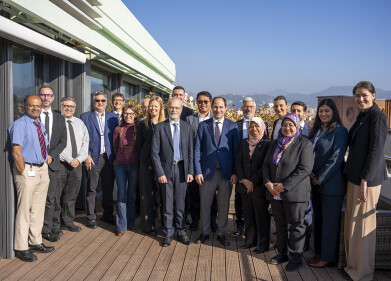Air clean up
Can Your Car Colour Cut Pollution?
Jul 18 2017
It might sound ridiculous, but the colour of your car could have a significant impact on your carbon footprint. A study from the Lawrence Berkeley National Laboratory in California has found that driving a silver or white car is more environmentally friendly than driving a darker automobile.
That’s because the lighter surface of the car is more effective in reflecting the rays of the sun, thus keeping the car cooler and reducing the need to use air conditioning, which in turn improves fuel economy and reduces emissions.
Light is greener than dark
Initially commissioned back in 2011, the Cool Cars Project studied the difference in interior temperature between light- and dark-shelled cars. They found that a black car was only capable of reflecting up to 5% of the sun’s rays, while a lighter model (silver or white) could reach reflection capabilities of up to 60%.
In turn, this meant that the interior of the light car was between 5°C and 6°C cooler than its dark counterpart. In summer months, this would mean that the lighter car would not need to use its air conditioning nearly as much as the dark car, translating to a calculated fuel economy improvement of 0.44mpg.
This improved fuel economy would save roughly 2% in carbon emissions and 1% in other contaminants. While these percentages sound small, if applied across the board in all automobiles across the world, it would mean saving millions of gallons of petrol and diesel and reducing emissions at the same time.
Every little helps
Of course, the boost that this provides to the UK air quality problem (where air conditioning is used less frequently than the US) might well prove to be negligible. However, many experts believe that flexibility is key to solving air pollution abatement challenges and that every little helps when it comes to combatting airborne contaminants.
In a similarly inventive project, scientists from Stanford University are attempting to reduce the amount of air conditioning needed in buildings by installing specially-designed mirrors on their roofs. The sophisticated technology combines several sheets of wafer-thin silver, silicon dioxide and hafnium oxide to reflect 97% of sunlight directly back into space, effectively using the universe as a cosmic heat-sink.
However, the inventors have stressed that the project is not a viable solution to climate change. “Roof space accounts for only a small portion of the Earth’s surface, so at this point we don’t think this would be a geoengineering solution,” explained Shanhui Fan, lead developer on the project. “Rather, our contribution on the greenhouse gas emission issue is simply to reduce electricity consumption.”
Of course, tighter controls on the number of cars on our streets – as has been trialled in cities such as Oslo, Berlin and Paris – would provide a more comprehensive solution to the problem. But for now, projects like Cool Cars and the Stanford mirror at least go some way to mitigate our increasingly contaminated airways.
Events
Feb 05 2025 Nantes, France
Feb 16 2025 Kampala, Uganda
Feb 26 2025 Chennai, India
Feb 26 2025 Tulsa, OK, USA
WATERTECH CHINA (GUANGDONG) 2025
Mar 05 2025 Guangdong, China












